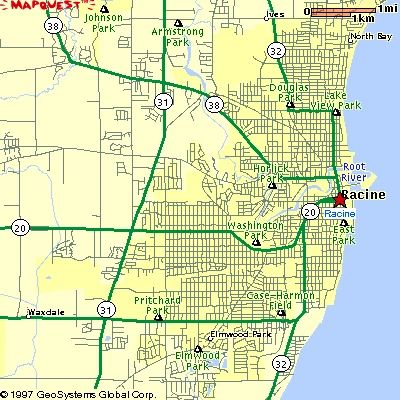Root River Steelhead Facility
Fishing Wisconsin
Lincoln Park - Racine, Wisconsin
Welcome to the Root River Steelhead Facility. Use this self-guided tour to learn how the facility operates and why it was created.
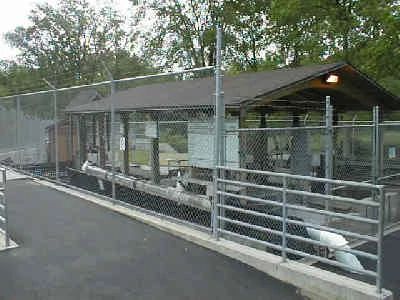
The facility was built in 1992-93 to help the Wisconsin Department of Natural Resources more effectively manage Lake Michigan's trout and salmon fishery. Each fall and spring, migrating chinook salmon, coho salmon, brown trout and rainbow trout (steelhead) enter the streams as part of their spawning ritual. Because successful natural reproduction of trout and salmon does not occur in Wisconsin waters, the fishery is entirely dependent upon hatchery-raised fish. This facility is Wisconsin's primary source of steelhead eggs and brood (parent) stock and is the backup facility for the collection of eggs of other trout and salmon species. Each year, approximately 500,000 steelheads are stocked in the Wisconsin waters of Lake Michigan. The weir is the tool with which the DNR collects the eggs to accomplish this goal.
Another function of the facility is to enable DNR biologists to gather biological information on a large number of fish that pass through this facility as they migrate up the river. Data relating to the overall health of the fish, growth rates, migration patterns and other important information are collected to help us learn more about the fishery.
Area 1 - Weir (dam) and Fish Ladder Entrance
This in-stream dam blocks the upstream migration of trout and salmon during their spawning run. Large grates attached to cables can be raised to completely block fish movement or lowered to allow some fish passage under certain water conditions. The large volume of water flowing down the ladder attracts fish to the ladder entrance. The fish respond to their instinct to swim into the flow of water and enter the ladder. This begins their trip up the steps to the holding pond.
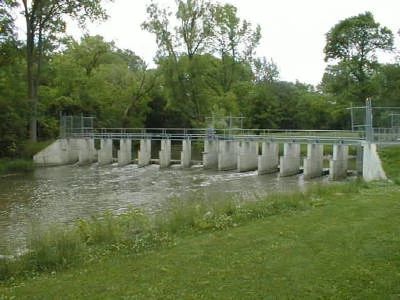
Area 2 - Fish Ladder
The ladder is a 90-foot-long chute with a steep slope and a series of steps. Water flowing down the ladder stimulates the fish to continue to pass up and over each step swimming against the flow. When the fish pass over the final step at the top of the ladder they enter a large 40-foot square holding pond that surrounds the work area. This final step has a finger-like grate at the top, which discourages the fish from traveling back down the ladder.
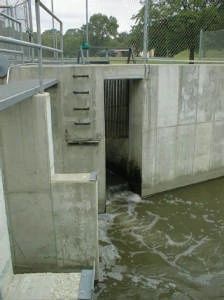
Area 3 - Holding Pond
This large area has a mixture of river water and well water pumped into it continuously. Inside the work area, you can see a large volume of water being discharged into the pond through the white pipes. At certain times the water is also circulated through an aerator which adds more oxygen to the water. The pond is sloped toward the ladder which causes the water to flow down the ladder and over the steps.
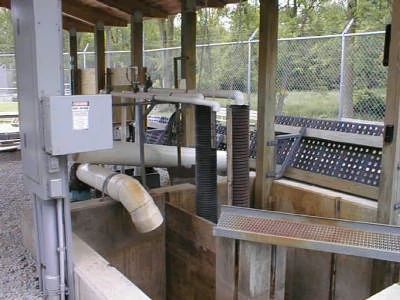
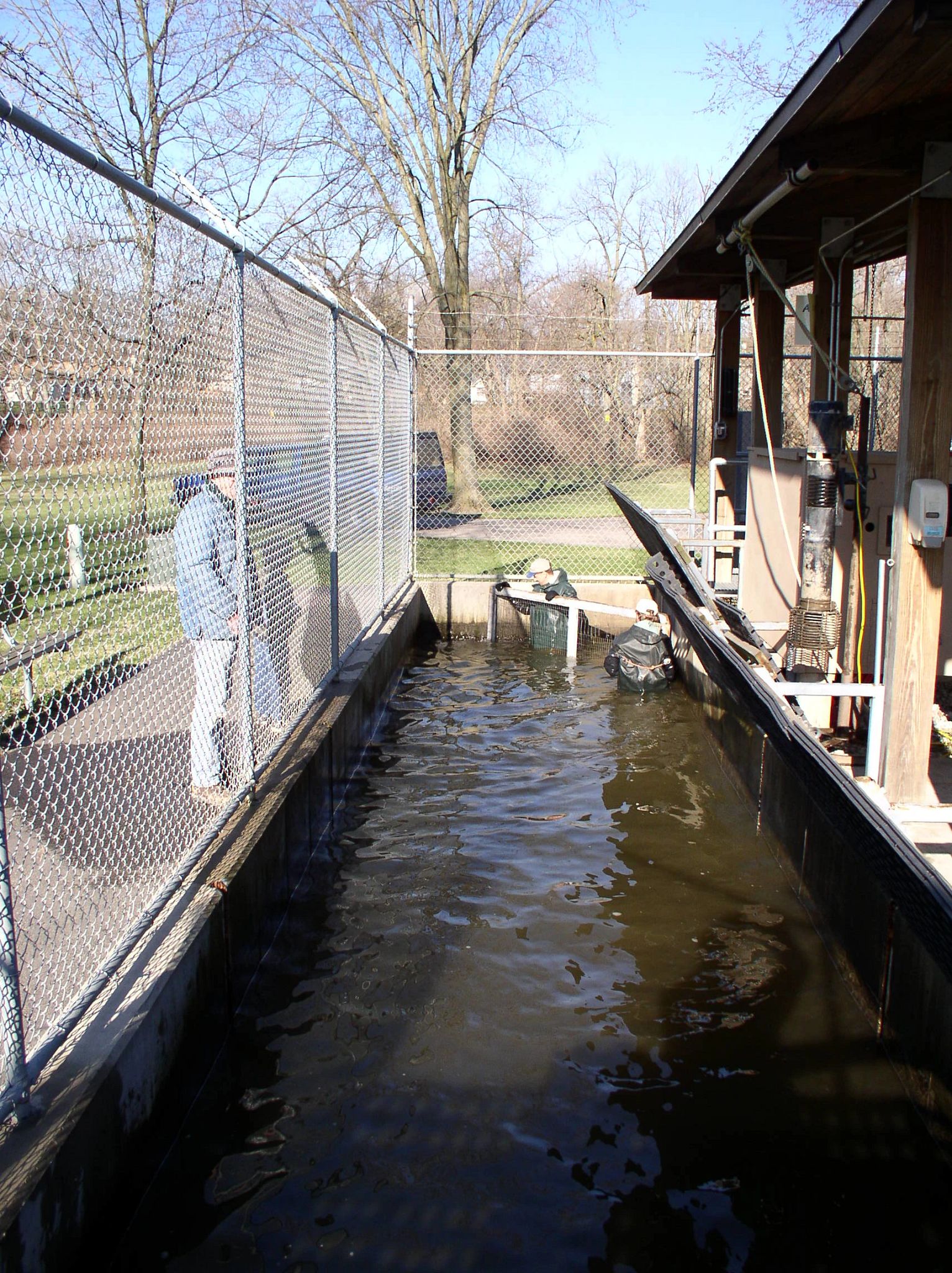
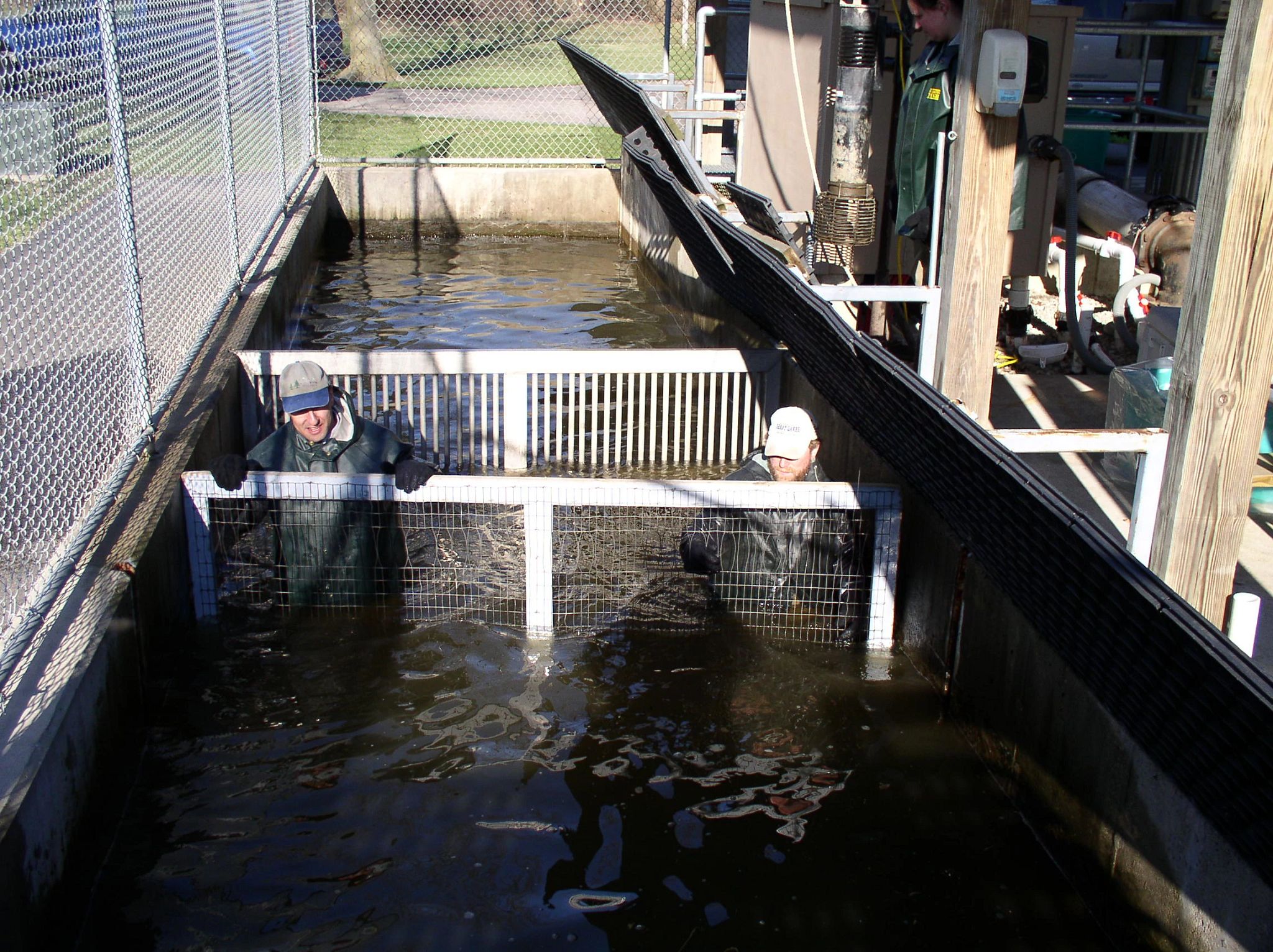
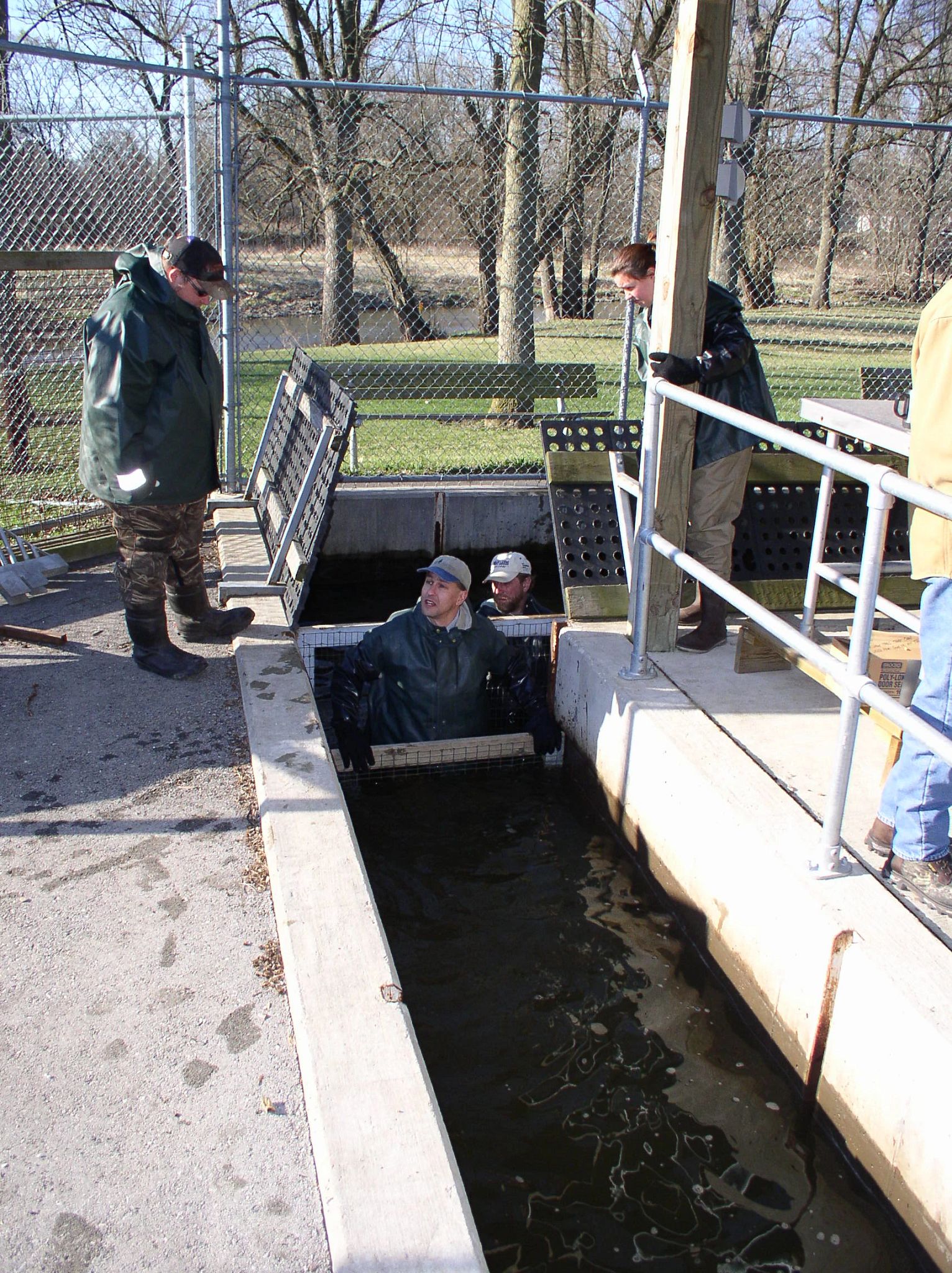
From the two large viewing windows at ground level, you can watch fish as they swim up the last series of steps and enter the holding pond.
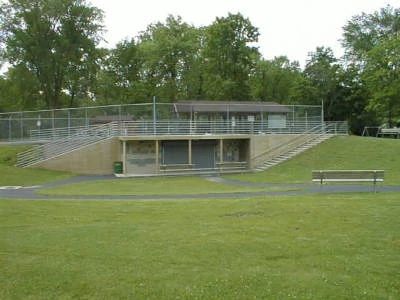
Area 4 - Work Area
Here Wisconsin DNR crews process fish from the holding pond. A 4-foot square basket mechanically lifts fish from the pond where they drop into a stainless steel tank. Carbon dioxide added to the water acts as an anesthetic enabling biologists to handle fish without injuring them. The fish are removed from the tank by Wisconsin DNR personnel who record a variety of biological information. Data such as length, weight and health status are collected.
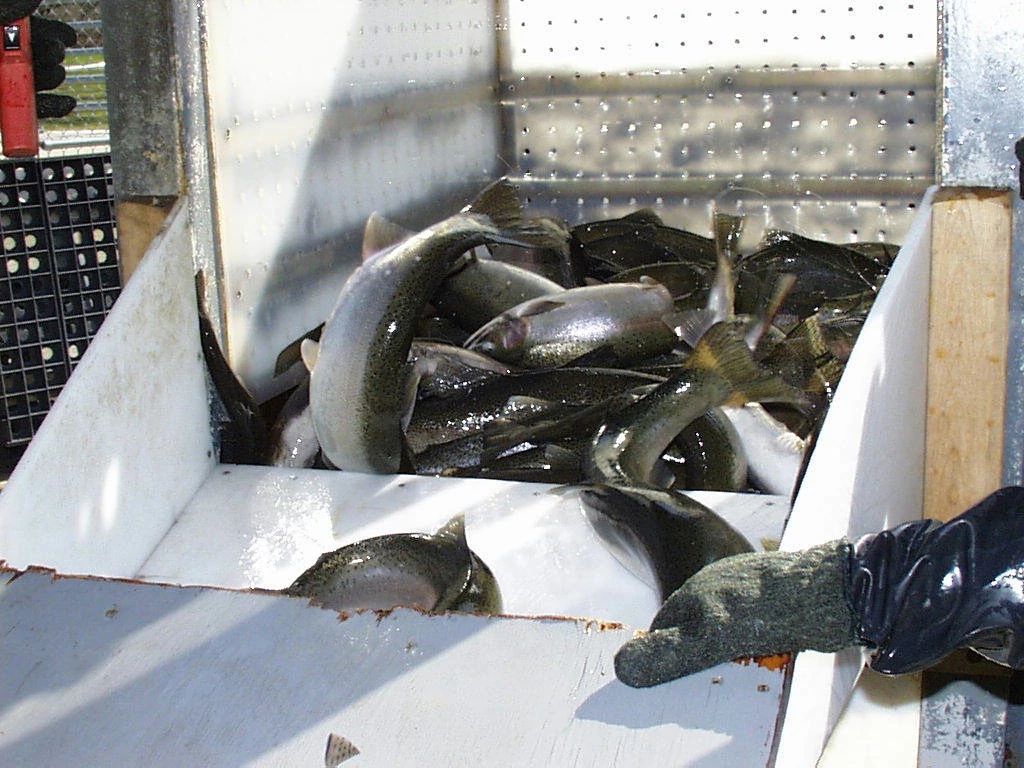
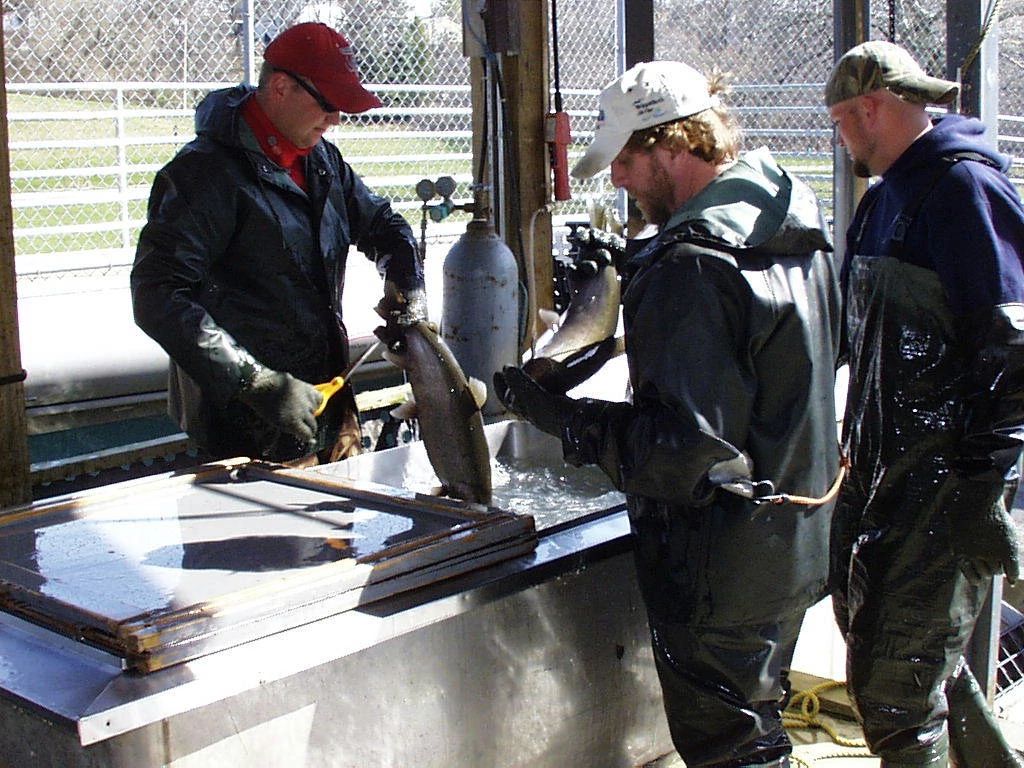
Hatchery crews are on-site at various times to remove eggs and sperm from fish ready to spawn. The eggs are squeezed from the females into large pans, fertilized, mixed with water and carefully stored for transportation to the hatchery for incubation and rearing. This procedure is sometimes aided by the use of compressed air injected with a hypodermic needle into the body cavity of the female which gently forces the eggs out and into the pan. Sometimes fish not ready to spawn are segregated into special areas of the holding pond until they ripen. Certain fish, such as skamania strain steelhead are captured and transported as adults to the hatchery, where they are held for several months until ready to spawn. Once fish are processed, they are placed into oxygen-rich water in the large black circular tanks to recover from the handling process. After recovery, they are placed into the large clear plastic tube which runs underground back to the river. Flowing water through the tube helps carry the fish to the river where they are again accessible to anglers.
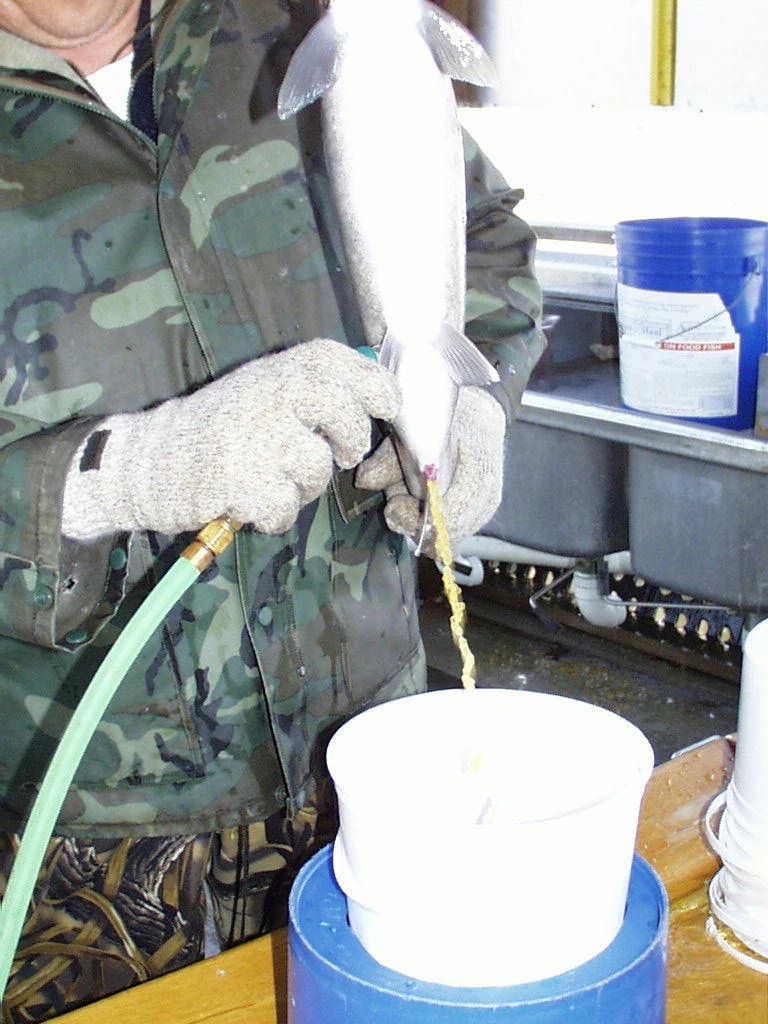
Directions to Facility
To get to the Root River Steelhead Facility from I-94, go east on Highway 20 to Highway 31. Go north on Highway 31 to Highway C (Spring Street). Turn right onto Spring Street to Domanik Drive. Turn left on Domanik Drive and go to Lincoln Park. Follow the DNR signs to the Facility.
Another route would take you south on Hwy 38 (see the second map) to Spring Street. Take a right on Spring Street and then travel about 2 blocks to the entrance of Lincoln Park. A large sign denoting the Root River Steelhead Facility will direct you into the park. Take Domanik Drive through the park to the facility.
